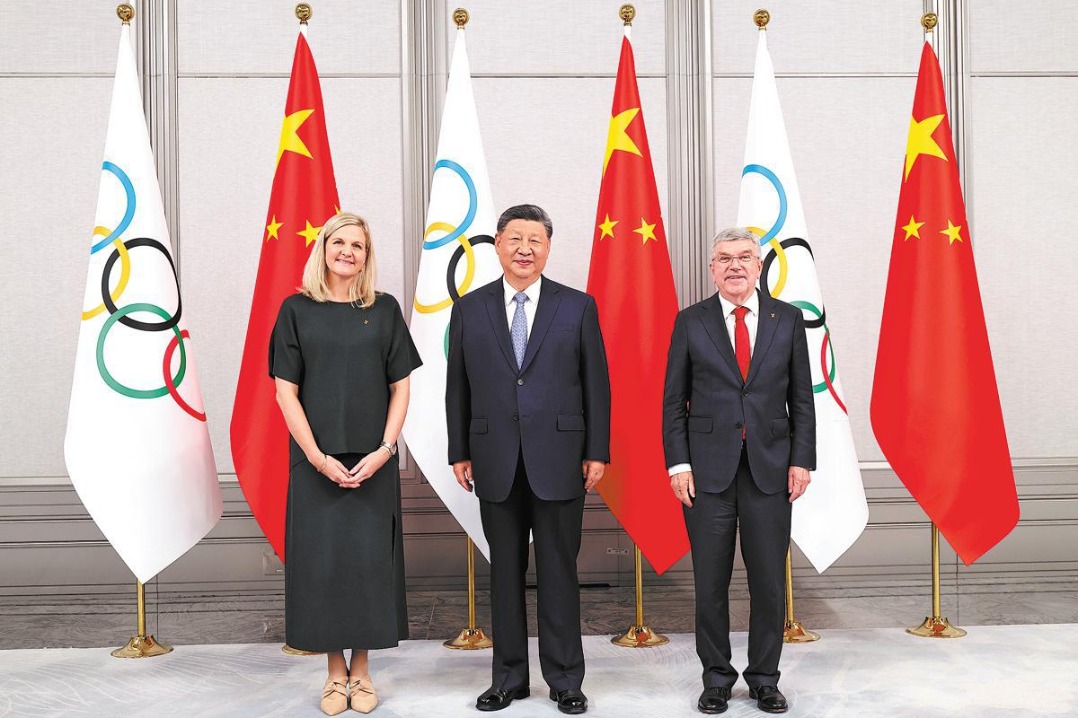Confluence of interests
Complex political motivations and strategic purposes drive the establishment of regional cooperation mechanisms


Complex political motivations and strategic purposes drive the establishment of regional cooperation mechanisms
With the advancement of global multilateral cooperation facing obstacles, regional cooperation initiatives have seen accelerated development.
Regional cooperation initiatives are characterized by clear political motivations. The United States has always had strong strategic motivations for promoting regional cooperation. For example, to hedge against the influence from a unified European market, the US had two major regional strategies. The first was to propose "a growing sense of community" among economies in the Asia Pacific region at the 1993 APEC summit in Seattle. However, in the face of the sharp rise in China's overall competitiveness, the US reduced its investment in APEC, abandoned the principle of "open regionalism", and instead promoted the construction of the Trans-Pacific Partnership, an initiative that excluded China. Washington later launched the "Indo-Pacific Strategy" with the aim of containing China. The second was that in 1994, the US proposed the building of the Free Trade Area of the Americas, aiming to establish a large market that includes most American countries. But the strategic attempt to unify the Americas did not become a reality.
Although Europe's strategic competition with the US is carried out with non-confrontational thinking and design, mainly through strengthening the internal cohesion and capacity building of the European region, the US has been highly vigilant against the development of the unified European market, the use of the euro, and the unified European military force, and has taken measures to hedge against such moves. At present, due to the impact of the conflict between Russia and Ukraine, the European Union's reliance on the US has increased in terms of strategy and security, but its strategic efforts to reduce its dependence on the US and Washington's influence in European affairs have not changed.
Southeast Asian countries also have distinct political and strategic considerations in promoting regional cooperation. On the one hand, they hope that through the establishment of the Association of Southeast Asian Nations, they will be included in a regional cooperation mechanism, and the countries can achieve friendly coexistence and cooperative development, putting an end to the history of regional confrontation and conflict. On the other hand, ASEAN's strategic considerations are mainly reflected in the use of regional integration as a platform to ensure its autonomy and central role in regional affairs, so as to gain the initiative in the geostrategic competition among major countries. The bloc's status and influence have gradually risen through its development, from building itself into a free trade area to the building of a regional community. It has created an inclusive, open and cooperative model that avoids getting involved in conflicts between major powers. The bloc has not only maintained the peaceful development of the region, but also served as a buffer in the strategic competition among the major powers in East Asia and the "Indo-Pacific region". It has become a successful example of regional cooperation in Asia.
The cooperation mechanisms promoted by China in its neighborhood regions are neither exclusive nor confrontational. Take the Shanghai Cooperation Organization as an example. The establishment of the SCO was intended to build a new type of cooperative relations with Russia and the Central Asian countries, and to create a peaceful, stable and developing region guided by a vision for common and cooperative security. Today, the SCO has become a new type of regional cooperation organization. Its member states have created a regional security and development environment through consultation and cooperation, and achieved win-win results.
China actively participates in and promotes regional cooperation in addition to active engagements in cooperation with regions that are geographically not close to it. For example, China has actively promoted cooperative relations with Africa, Latin America and other regions, and promoted the establishment of cooperation mechanisms such as the Forum on China-Africa Cooperation, the Forum of China and the Community of Latin American and Caribbean States, and the China-Pacific Island Countries Economic Development and Cooperation Forum. China's regional cooperation strategy does not target third parties, nor does China force other countries to take sides. It focuses on the cooperation agenda jointly set by parties involved to achieve common development.
In response to the new trends and features of regional cooperation, China adheres to the principle of open and inclusive regional cooperation, and to the direction of cooperative and common development. On the one hand, Beijing takes the initiative to align with existing regional cooperation mechanisms. For instance, China has filed applications to join the Comprehensive and Progressive Agreement for Trans-Pacific Partnership and the Digital Economy Partnership Agreement, in an effort to align with new rules. On the other hand, while making its own rules and laws on digital security, China has advocated joint protection of data security and ensuring the security of the digital economy.
In response to the strong concern of all countries for development security and social security in the process of cooperation, China should give greater priority to common development and the planning and implementation of cooperative development agendas. For example, it is important to build a more secure system for capital and supply chains, and develop an identity-based guarantee mechanism.
At present, the US' considerations are mainly focused on strategic competition with China, a zero-sum strategic game in the eyes of Washington. In the context of this strategic competition, the US has advocated decoupling from China in terms of key technologies and important supply chains by promoting a "values-based" cooperation that excludes China. Participants include both US allies and opportunist countries that have joined out of self-interest considerations. But most countries will not follow the lead of the US, considering the importance of their relationship with China. Instead, they will make multiple choices rather than taking sides. In response, China should adopt a more flexible approach in participating in and promoting regional cooperation, prioritizing cooperation over projects and formulating functional rules. For example, considering the importance of supply chains, China can actively promote efforts to build up the security of supply chains and formulate rules on how to maintaining the supply chain under normal and abnormal circumstances.
While fully supporting the effectiveness of the multilateral system, China should prioritize participation in and the promotion of regional economic cooperation in its foreign economic strategy, and come up with different plans and agendas in accordance with different situations, characteristics and interests in different regions, in order to actively respond to changes in the international political and economic situation.
The author is a member of the Chinese Academy of Social Sciences and the dean of the Institute of International Studies at Shandong University. The author contributed this article to China Watch, a think tank powered by China Daily. The views do not necessarily reflect those of China Daily.
Contact the editor at editor@chinawatch.cn
































